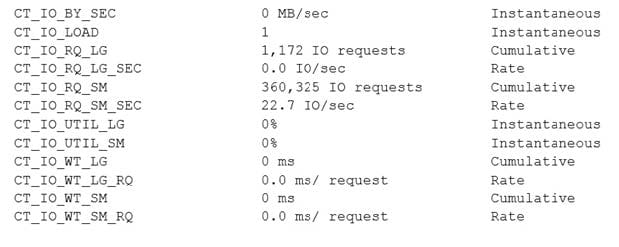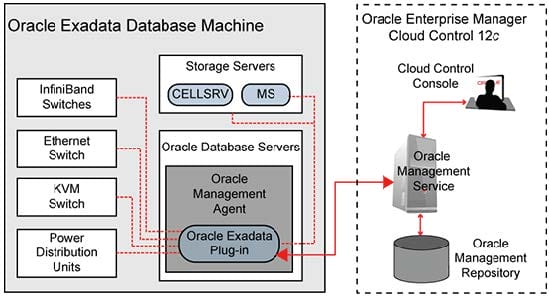1Z0-070 Online Practice Questions and Answers
Identify three valid reasons for creating multiple griddisks on a single harddisk-based celldisk.
A. to implement storage realms so that storage that can be reserved for specific resource consumer groups in the same database
B. to enable the creation of normal or high redundancy ASM diskgroups
C. to segregate storage into multiple pools with different performance characteristics
D. to enable disk mirroring for the system area
E. to implement storage realms so that storage can be reserved for specific databases
F. to implement storage realms so that storage that can be reserved for specific Grid Infrastructure clusters
You are planning your deployment of Enterprise Manager to monitor all the components of an X5 Database Machine.
A part of the requirement is to provide for high availability of the monitoring infrastructure.
If the host running the agent that has Database Machine targets bound to it fails, the monitoring of these
targets must be done by another agent.
Which three statements are true regarding the configuration used to support this requirement?
A. Database Machine plug-ins must be deployed to at least two Enterprise Manager agents.
B. Fail back to the original agent when the host is restarted is done automatically.
C. Fail over to any secondary agent is done automatically.
D. Fail over to any secondary agent must be done manually.
E. Database machine plug-ins must be deployed to all Enterprise Manager agents.
F. Fail back to the original agent when the host is restarted must be done manually.
You wish to determine if the I/O resource management plan that you created has helped improve the performance of OLTP category I/Os on your X6 Exadata Database Machine.
You decide to examine the relevant metrics on all the cells, to see whether the I/O rate has improved for this category compared to last week, and whether waits and wait time have been reduced.
You issue this command on the first cell:

You examine the output from the first cell which contains:

Which two sets of metrics would you use to determine whether the I/O performance has improved for the OLTP category for the duration of the one-hour measurement period?
A. CT_IO_RQ_SM, CT_IO_RQ_LG, CT_IO_RQ_SM_SEC, and CT_IO_RQ_LG_SEC
B. CT_IO_UTIL_SM and CT_IO_UTIL_LG
C. CT_IO_RQ_SM_SEC and CT_IO_RQ_LG_SEC D. CT_IO_WT_SM, CT_IO_WT_LG, CT_IO_WT_SM_RQ, and CT_IO_WT_LG_RQ
Which two statements are true about backup performance when using Recovery Manager (RMAN) on an X5 Database Machine?
A. Backups are fast because the Infiniband network is faster than fiber channel storage, so RMAN read I/ O operations are faster than in traditional storage networks.
B. Backups are fast, because physical I/Os operations are reduced by the use of the Storage Index by cellsrv.
C. Backups are fast, because data blocks are read from the Database Flash Cache.
D. Backups are fast, because all data blocks are read from the Exadata Smart Flash Cache.
E. For incremental backups using Block Change Tracking, cellsrv filters blocks and returns only those that have changed since the last backup.
Which four statements are true concerning the configuration or use of Enterprise Manager Cloud Control to monitor and manage Exadata Database Machine components?
A. Computer nodes forward their SNMP traps to the Management Server process on the same computer node.
B. Storage nodes forward their SNMP traps to the Management Server process on the same storage node.
C. Cloud control can monitor and manage a Database Machine compute node expansion rack.
D. Oracle management agents must only be installed on one storage node in a Database Machine to enable monitoring and management of all storage nodes.
E. Cloud Control cannot monitor partitioned Exadata Database Machine systems.
F. Cloud Control can monitor and manage a Database Machine storage Expansion rack.
G. Oracle management agents must only be installed on one compute node in a Database Machine to enable monitoring and management of all compute nodes and storage nodes.
Which three are true concerning Smart Scans?
A. The decision to perform a Smart Scan is made by the Optimizer.
B. Smart Scans are only possible during full table scans or fast full index scans.
C. Smart Scans are possible on Index Organized Tables (IOTs).
D. Smart Scans always outperform scans that are not offloaded.
E. Smart Scans are possible on heap organized tables.
F. Smart Scans are possible on uncompressed B*Tree indexes.
Which three are true concerning Hybrid Columnar Compression (HCC) deployed on Exadata storage?
A. HCC can be used only when the Exadata Smart Flash Cache is configured in Write-Through mode.
B. HCC data is never cached in the Exadata Smart Flash Cache.
C. By default, decompression is performed by Exadata Storage Servers.
D. Rows residing in HCC compressed segments, are always self- contained in a single database block.
E. Rows residing in HCC compressed segments, are always self- contained in a single compression unit.
F. Row-level locks are supported on HCC compressed data.
Which three statements are true about Automatic Hard Disk Scrubbing and repair on high-capacity storage servers in an X5 Database Machine?
A. Disk repair is made immediately from Smart Flash Cache for corruption on disk when the corresponding data is clean in the Smart Flash Cache.
B. Hard disks are scanned every two weeks by default but only when disks are idle.
C. Hard disks are scanned every two weeks by default in all situations.
D. Disk repair is made immediately from Smart Flash Cache for corruption on disk when the corresponding data is dirty in the Smart Flash Cache.
E. Disk repair may be made from another mirror copy if the corrupt area is part of a Normal or High Redundancy Disk Group.

